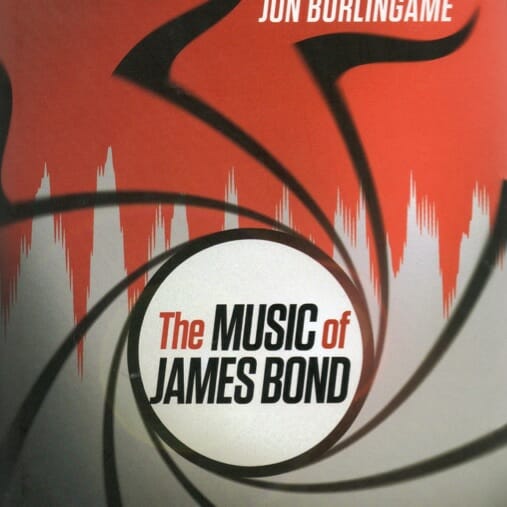The Music Of James Bond by Jon Burlingame
Licensed to Thrill

When asked to pick a favorite James Bond, I usually choose Pierce Brosnan.
I recognize the controversial nature of this selection, and offer in my defense that GoldenEye was the first Bond I ever saw, possibly accounting for my bias. Compared to Sean Connery’s thick charm, Roger Moore’s amused dandyism or Daniel Craig’s aggressive, lethal-bull-in-a-tiny-china-shop demeanor, Brosnan always seemed the suavest, most glamorous, most casually alcoholic of the bunch. (George Lazenby—who?—played Bond in just one film, and Timothy Dalton took the part for two, but neither actor put much of a mark on the role.)
Of course, the relative suavity of the man playing Bond represents just one of many possible dimensions for evaluating Bond movies. Best henchman? I lean towards Oddjob, from Goldfinger, since he stands out from a long string of physically imposing, blond, Neanderthal types. Best car chase? I’m partial to the yellow Citroen romping through the olive groves in the underrated For Your Eyes Only. Most impressive chest hair? This easily goes to Sean Connery. The most ridiculous name for a Bond girl? It probably comes down to Pussy Galore or Xenia Onatopp, with honorable mention to Holly Goodhead.
A new book by Jon Burlingame allows fans to evaluate the movies from yet another angle—best music. The Bond songs and theme have been an important part of Bond’s appeal since the release of Dr. No, which launched the now-famous theme song, full of taut guitar and jazzy swing. Monty Norman, the theme’s composer (John Barry, who did the music for many Bond films, has claimed credit for the composition, but a court decided it belonged to Norman in 2001), incorporated modern elements with more timeless classy ones just as rock, technological gadgets and spyware started taking over the world.
Soon other songs played over opening Bond credits and met with success. For those who haven’t seen the movies (is there anyone?), these signature credits generally blend images of shooting guns and buxom women into a dazzlingly cheesy display. The song soars in the background. Any object appearing in these sequences will likely morph quickly into a naked lady. Weapons emerge from mouths, cleavage . . . it’s all fair game. The popular English belter Shirley Bassey sang the third movie’s theme, “Goldfinger,” and made it a radio hit. Many stars would follow her gleaming example through the years.
Burlingame’s book devotes a chapter to each Bond movie—including, for the completists in the world, the 1967 spoof Casino Royale and the inferior Thunderball remake Never Say Never Again. Burlingame’s sub-sections delve into the origins of the theme songs, and each film has a “score highlights” section, describing in detail the placement of each part of the score throughout the whole movie.
We get plenty of song trivia. Ursula Andress’s brief singing part in Dr. No is dubbed (learning this fact probably would have broken my 13-year-old heart). When Bassey recorded “Goldfinger” in the studio, she wasn’t able to hold a long high note. According to the guitarist present at the recording session, Vic Flick, “‘then there was a rustling noise and suddenly this bra comes over the top of the vocal booth.’” Braless Bassey hit the right note.
As Burt Bacharach and Hal David scored the 1967 version of Casino Royale, they listened a lot to the classic bossa nova tune “Girl From Ipanema.” This inspired “The Look Of Love,” a Dusty Springfield hit that soundtracked a seduction scene in the film. Nancy Sinatra’s “You Only Live Twice” had to be cobbled together from “‘like 25 different takes’” because the singer could not master her nervousness in the studio.